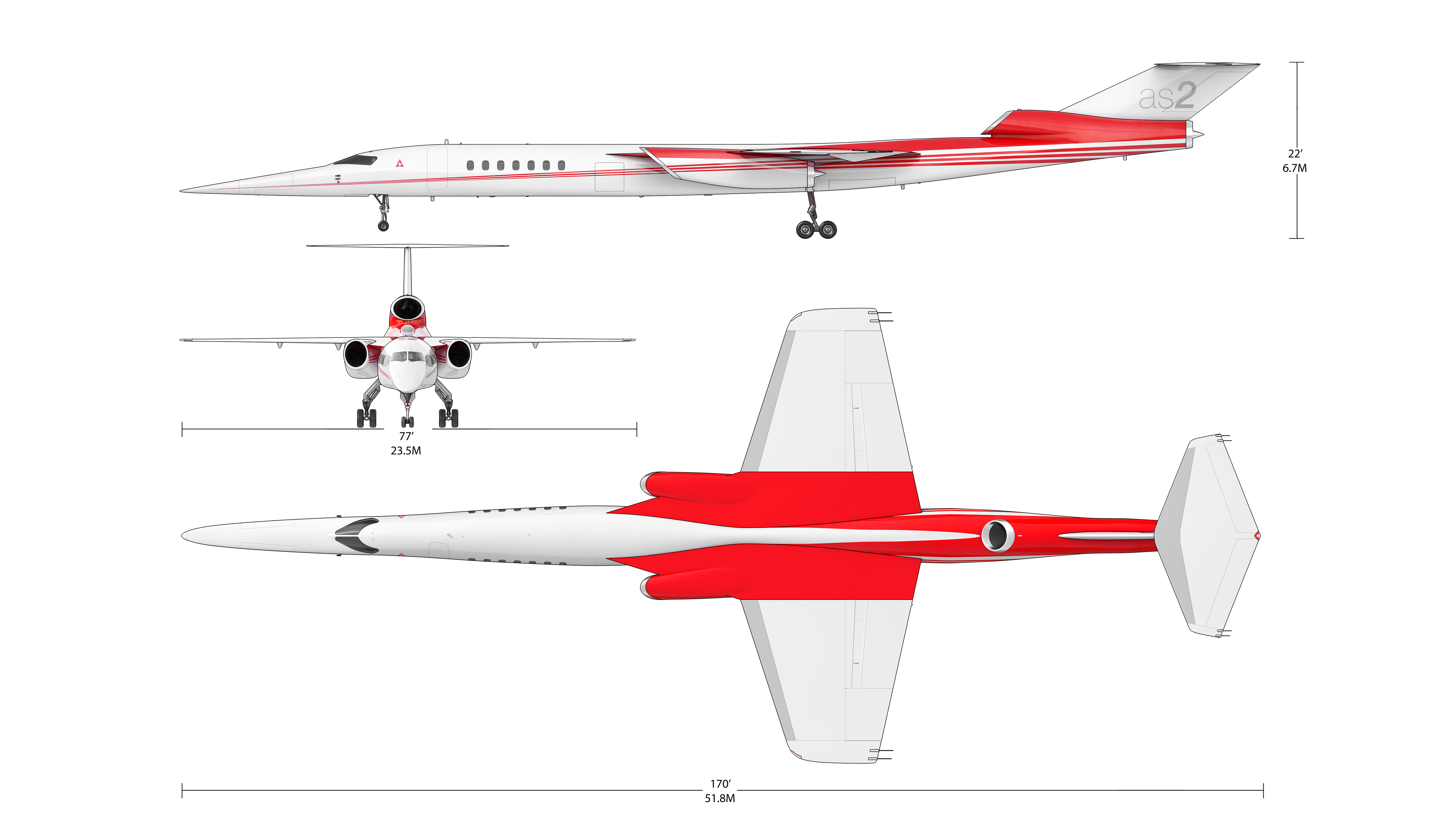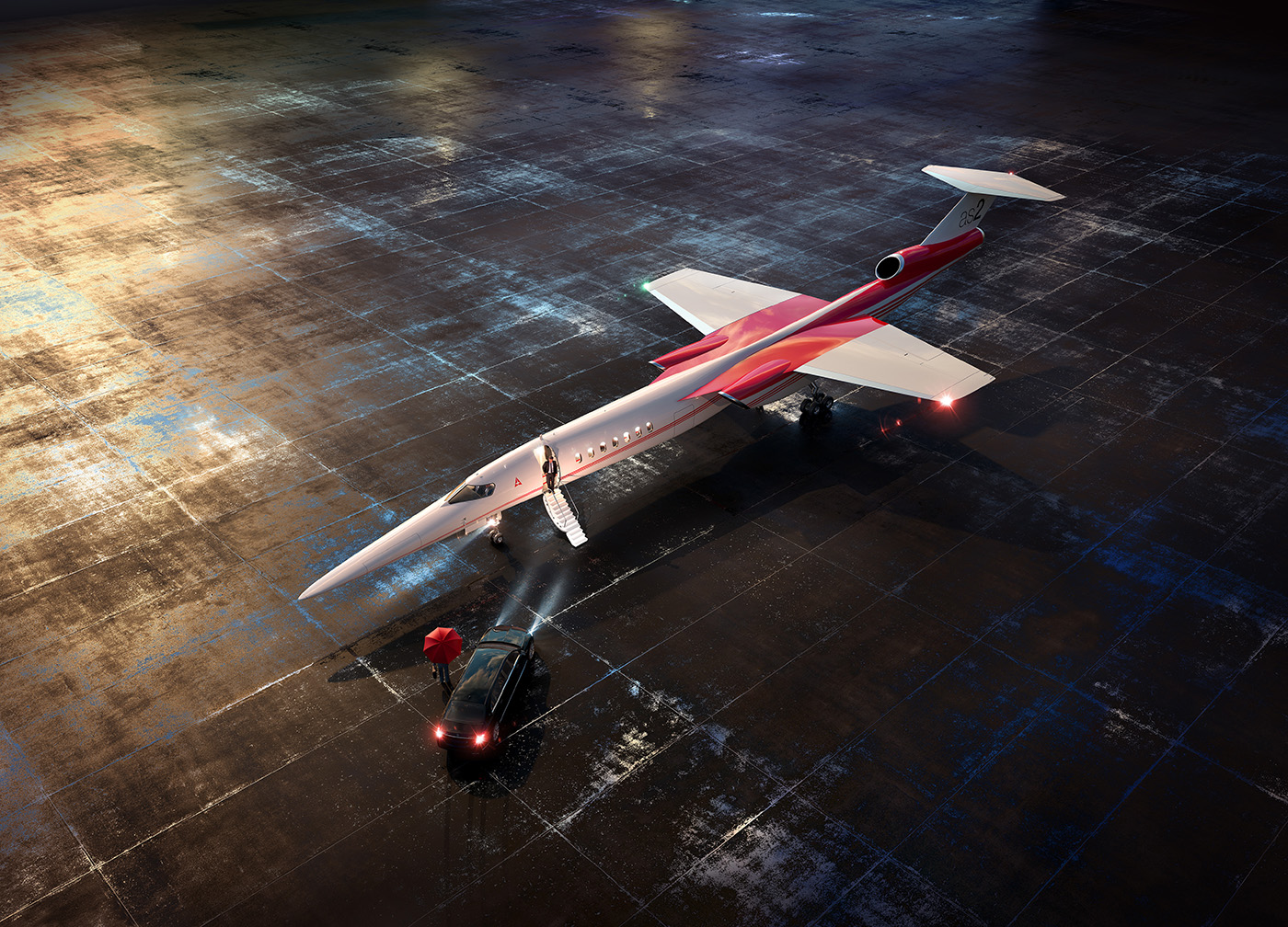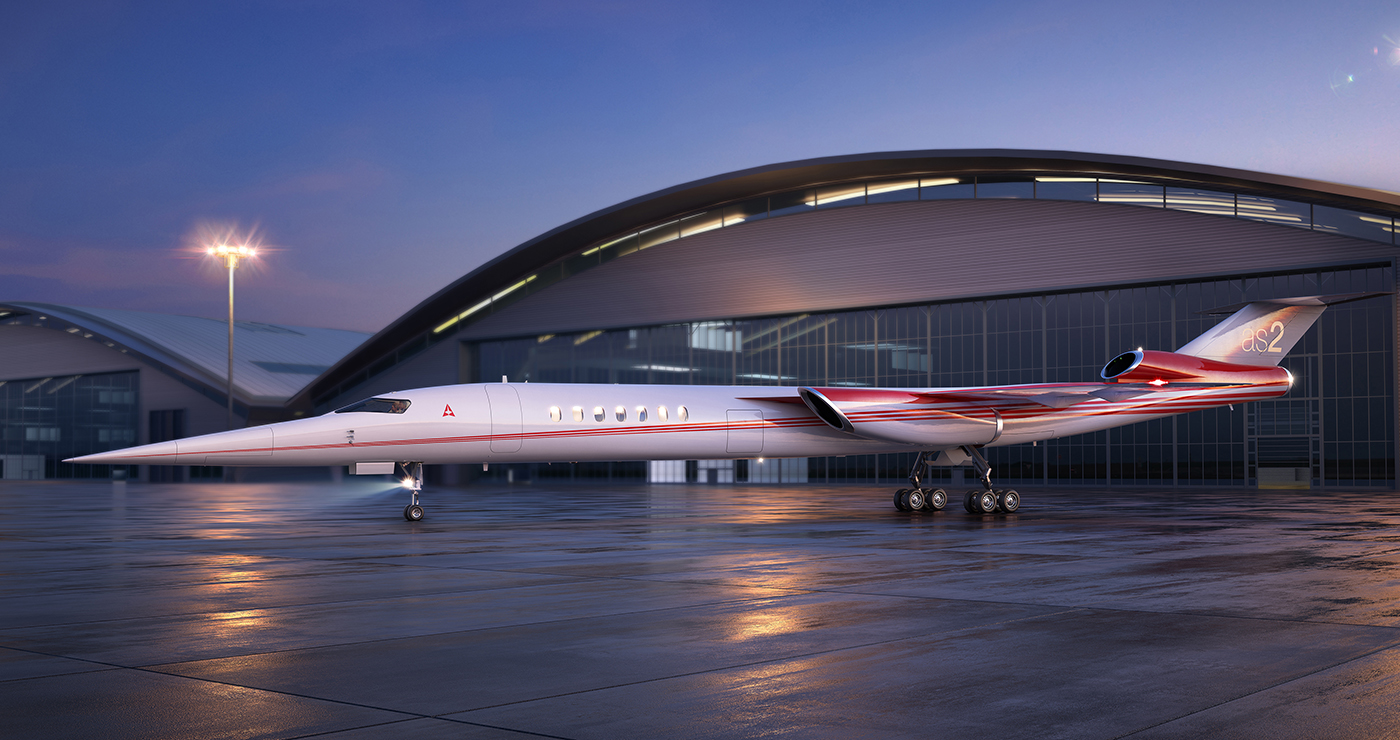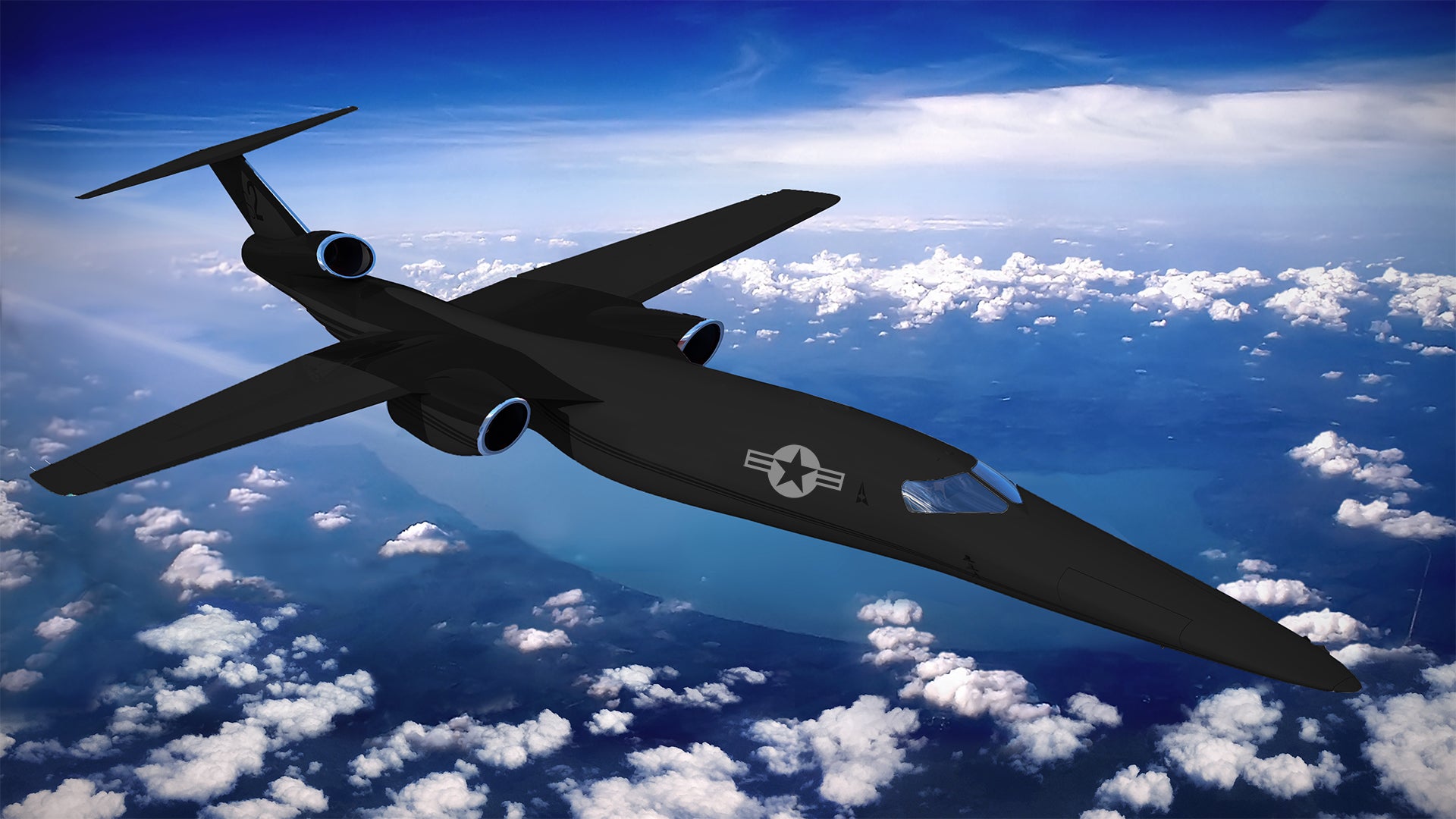Lockheed Martin has formally announced it is teaming up with Aerion Corporation to build the world’s first supersonic business jet, which would be the company’s first passenger aircraft produced in more than three decades. The plane, named AS2 and looks like an F-104 Starfighter and 727 airliner had a child, could potentially revolutionize private and possibly commercial air travel. But what’s not being talked about is that it could also have major military applications as well.
On Dec. 15, 2017, Lockheed Martin and Aerion released a joint statement outlining a plan to spend the next year developing the framework for a full partnership, to include engineering and design work, moving prototypes through various certification processes, and serial production of the final aircraft. In May 2017, General Electric signed a similar deal regarding development and production of the aircraft’s powerful engines.
“This relationship is absolutely key to creating a supersonic renaissance,” Aerion’s chairman Robert Bass said in the press release. “When it comes to supersonic know-how, Lockheed Martin’s capabilities are well known, and, in fact, legendary. We share with Lockheed Martin a commitment to the long-term development of efficient civil supersonic aircraft.”
“Following our initial review of Aerion’s aerodynamic technology, our conclusion is that the Aerion AS2 concept warrants the further investment of our time and resources,” Orlando Carvalho, the Executive Vice President of Lockheed Martin Aeronautics, added in the statement. “We are committed to remaining on the cutting edge of aerospace technology and are excited to examine the contribution we might make to working with Aerion on making aviation history.”

As it stands now, Aerion is envisioning its AS2 as a triple-engine jet that will be able to supercruise for long periods of time at a speed of up to Mach 1.4. The corporation has presented art depicting high- and low-wing designs with the engines clustered toward the rear.
At a speed of mach 1.4, the AS2 would supposedly have a range of 4,200 nautical miles. At a near supersonic cruising speed of Mach 0.95, it might be able to extend that to 5,400 nautical miles.
The corporation has been heavily pitching it initially as a business jet, with possible cabin configurations mirroring typical offerings for such aircraft, featuring a mixture of seats, tables, galleys and bars, or even a stateroom with a bed. Aerion could easily configure this space so the aircraft could serve as small airliner, as well.

In 2015, Flexjet announced it had placed an order worth $2.4 billion for 20 AS2s, which would indicate a sales price of around $120 million, or about twice that of a Gulfstream 650. This price may climb, but acquisition cost threshold is likely less of a barrier to success for an aircraft like this than its end-game performance capabilities and operating costs.
The bizjet charter service expects deliveries to begin in 2023 and to start offering full service with the type two years after—a highly aggressive if not outright unrealistically optimistic plan, but with the resources of Lockheed Martin now involved, compressing the AS2’s development timetable may be possible.

Aviation firms have been interested in the potential of a civilian supersonic passenger or transport plane since U.S. Air Force legend Chuck Yaeger officially broke the sound barrier in the Bell X-1 in 1947. The major limiting factors ever since have been the cost to operate such an aircraft and the noise they produce, both during terminal operations and while creating sonic booms while in cruise.
The famous Anglo-French Concorde supersonic airliner, which Air France and British Airways operated from 1976 until 2003, flew often circuitous routes to avoid populated areas. Government subsidies were largely responsible for keeping the aircraft going as long as they did. Aside from the Concorde, and briefly the Soviet Tu-144, no other civilian supersonic transport initiative has come to frutition.
Aerion itself has been working toward its goal of reviving supersonic air travel for more than a decade, announcing plans for its Supersonic Business Jet, or SBJ, in 2004, suggesting the aircraft would be ready to go by 2017 or 2018. In 2014, it unveiled the refined AS2 concept, but has still not produced a prototype.
The corporation has
worked extensively with NASA on various supersonic design features that would go into the AS2. The most important of these are advanced airframe designs that maintain a steady, aerodynamic flow of air across their surfaces, even at high speeds when turbulence is more likely to occur.
In theory, the final aircraft should more efficient and be able to either mitigate the impact of any sonic booms it produces or eliminate them altogether. That last point is particularly important, since the Federal Aviation Administration (FAA) prohibits civil supersonic air travel over the United States at present and there are similar restrictions in Europe and elsewhere.

Aerion says that the AS2, which will be made mostly out of composite materials, will be able to cruise right below the sound barrier, at Mach 0.95, avoiding any sonic booms. On top of that, though, it may be able to reach Mach 1.2, without doing so, “depending on atmospheric conditions, principally temperature and wind,” according to the firm’s website
This “boomless cruise” could entirely change the nature of supersonic air travel and Aerion has been advocating for an exemption to FAA restrictions if it can demonstrate the system works. But there looks to still be a long way to go till realizing such a waiver.

Aerion had been working with Airbus Defense and Space on the project since the end of 2014, including on the airframe, the layout of various internal systems, and a conceptual design of the fly-by-wire control system. The European aviation consortium, embroiled in number of corruption allegations that have forced its CEO and COO to resign, has since apparently given up on the project.
“We are grateful for Airbus’ contribution to the program,” Brian Barents, Aerion’s Executive Chairman, said in the joint statement with Lockheed Martin. “We could not have moved the program to this stage without their support.”

For its part, GE says that it has settled on configuration for the AS2’s engines, but has yet craft the initial design. A report by FlightGlobal says that the available information points to an engine that mates the GE-developed high-pressure section from the successful CFM56 turbofan to a new low-pressure portion specifically.
“A key challenge will be managing the high inlet temperatures of the supersonic engine at high-altitudes,” Brad Mottier, Vice President and General Manager for GE’s Business and General Aviation and Integrated Systems Division, explained, according to FlightGlobal. “This is no easy task, otherwise someone would have done a civil supersonic jet before.”
This is where Lockheed Martin comes in. Separate from Aerion and the AS2 effort, the company has been working with NASA on a Quiet Supersonic Technology test bed, otherwise known as QueSST. The goal of that project is to experiment with an aircraft shape that would turn the sonic boom from an aircraft flying at Mach 1.4 at 55,000 feet into nothing more than a perceived “heartbeat” to individuals on the ground.

NASA and Lockheed Martin completed a preliminary design review of the proposed aircraft, along with sub-scale wind tunnel tests, earlier in 2017. The plan is to have a manned experimental plane in the air by 2021.
Between its extensive resources, long-standing experience with supersonic travel – including work on the A-12 and SR-71 spy planes, the proposed L-2000 airliner, various fighter jets, a hypersonic combat aircraft, and likely a slew of other classified projects, not to mention its present work on QueSST, Lockheed Martin is an especially attractive partner for this project. In return, the Maryland headquartered defense and aerospace giant gets a route back into the civil and commercial aviation business that it has largely abandoned since the 1980s after failing to find the success it had hoped for with the L-1011 TriStar.

If the two can get AS2 figuratively and literally off the ground, it could be an even more significant event than the introduction of the Lockheed JetStar, the world’s first real business jet type aircraft. And speaking of the JetStar, a Kelly Johnson product, there is certainly some significant parallels here, as the AS2 could also light off a whole new market segment in aviation, similar to the the JetStar’s legacy. And like that aircraft, if the AS2 actually comes to fruition, it will also be very attractive to the United States military.

A large business jet-sized aircraft that can sustain mach 1.4 for thousands of miles would mean a whole series of possibilities for the USAF. Such an airframe could drastically cut transit times over vast distances. If it can be configured for aerial refueled, its impact could be exponentially more severe.
The aircraft would be especially useful not just for rapidly deploying small teams of personnel and their gear around the globe for everything from VIP airlift to rapid logistics to emergency response missions, but also for more tactically-oriented tasks such as surveillance and electronic warfare support. The AS2’s unique capabilities tied to these mission sets are uniquely enticing considering the anti-access, area-denial (A2-AD) situations the U.S. and its allies could face in the future.

The Pacific region being the biggest challenge, where vast stretches of sea separate key locations and where China is actively building a set of capabilities that could deny American aircraft and naval power from stationing itself within many hundreds, if not thousands of miles of the Chinese mainland. With this in mind, the AS2 could provide high-speed logistics and tactical support throughout such a region, where sustaining widely dispersed operations will be an absolute necessity, not just for success but for survival.
AS2s outfitted for electronic warfare support could rush in behind stealthy attack aircraft and provide standoff jamming support and pinpointed cyber attacks during highly coordinated aerial assaults aimed at degrading and eventually destroying parts of the enemy’s anti-access “bubble.” The goal would be to eventually open up a number of sanitized corridors in which more vulnerable fighting forces can move closer toward the enemy’s shores.
With an unrefueled combat radius of roughly 2,200 miles, the AS2 could skim the enemy’s outer edges of control on surveillance missions, sucking up key information on their electronic order of battle and peering hundreds of miles into their territory with conformal radar systems. It could dash in and out fast enough so that survivability is ensured.
In essence, having near F-22 Raptor-like supercruise ability but over roughly 12 times the sustained distance, the AS2 can “shrink” a theater of operations and bring exciting new tactical and logistical possibilities to the table. There could even be some “kinetic” potential in a strike optimized AS2 variant.
By the images released by Aerion, the aircraft looks ideally suited for a weapons bay between the nose wheel gear and the main landing gear—basically where the cabin is located. But even if a relatively tiny set of weapon bay doors or stores ejection system could be fitted into a variant of the type, it could provide a form of regional time sensitive strike capability. And this is a very enticing capability for the U.S. military at this time. Even being able to drop Small Diameter Bomb sized weapons or a single stand-off weapon could provide a flexible and easily deployable quick-strike platform.

If the AS2 enters production, the Lockheed and Aerion will have little trouble selling a sizable amount of them. For the wealthiest people on the planet and for some corporations, time is the most expensive commodity of all, and Aerion is a time machine of sorts.
Because it would be much faster than anything else out there, it could make a dent even in the super-sized business jet market currently made up of everything from 737 Boeing Business Jets, to remodeled 757s, to to private 747-8is. Sure a lot of space is nice, but for most missions, getting there nearly twice as fast is nicer. But when it comes to the military, time can mean the difference between life and death, or a slight but critical edge over the enemy, making the AS2 just as relevant in the defense marketplace as the civilian or commercial one. With all this in mind, don’t be surprised if Lockheed’s Skunk Works gets deeply involved in the project.
Now we’ll have to see if Lockheed and Aerion can succeed where so many others have failed and deliver a certified supersonic private jet to the elite aircraft marketplace.
Contact the editor: Tyler@thedrive.com
